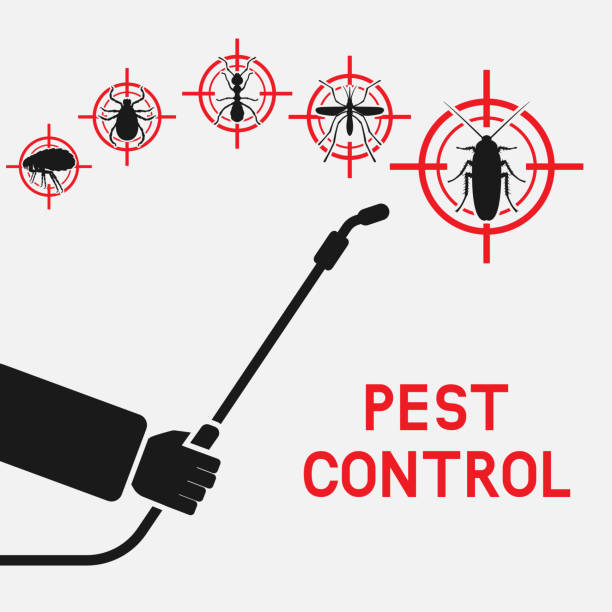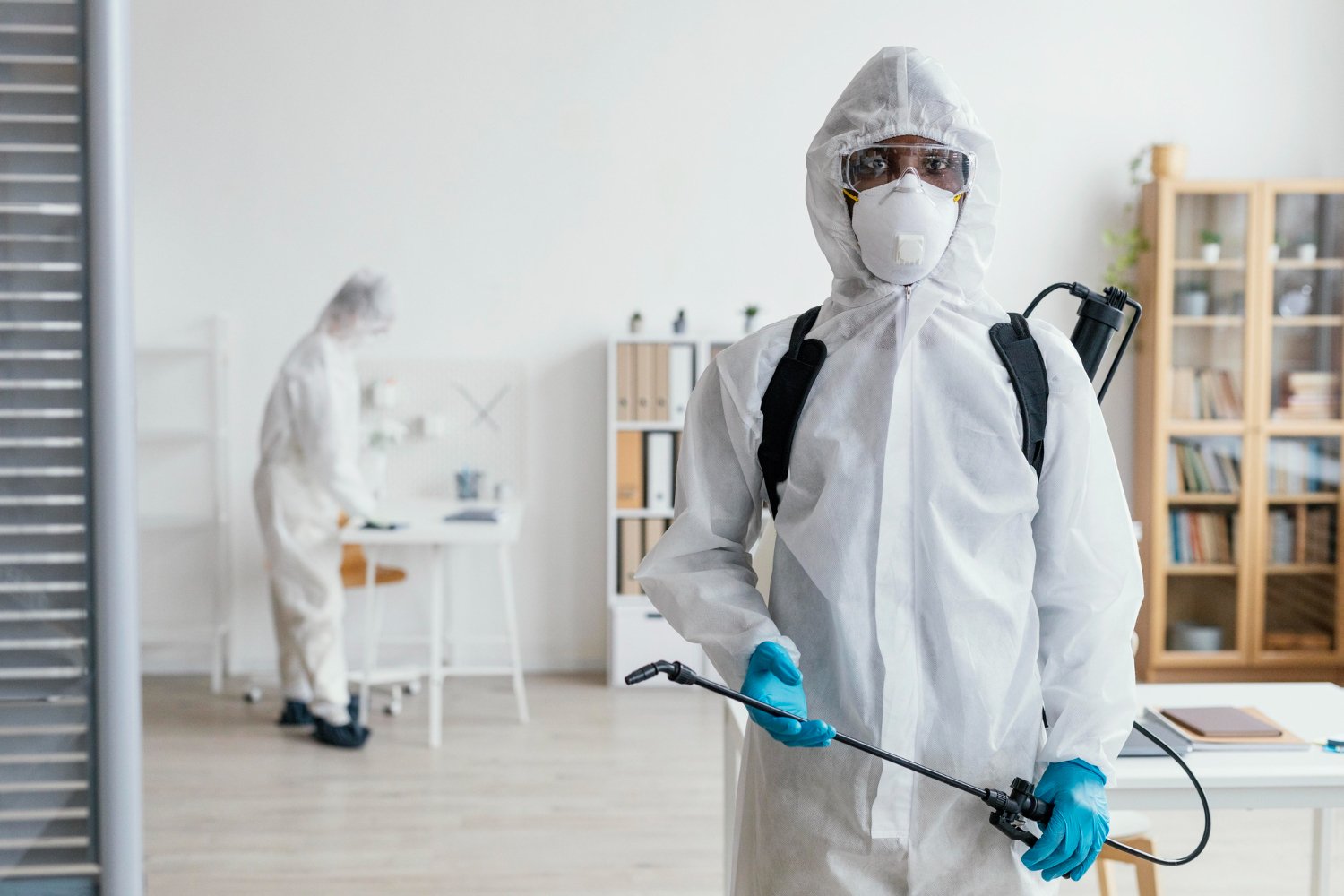Trust Pest Control Lockhart for Long-Lasting Pest Prevention
Trust Pest Control Lockhart for Long-Lasting Pest Prevention
Blog Article
Discovering Infestation and Treatment Techniques in the Globe of Parasite Control
The landscape of bug control includes a myriad of challenges, specifically as invasions of typical household insects remain to evolve. Recognizing the habits and reproductive patterns of these annoyances is vital for creating efficient treatment approaches. By incorporating safety nets with sophisticated management techniques, such as Integrated Insect Management (IPM), property owners can much better secure their settings. The efficiency of these techniques might differ considerably based on particular conditions. What hidden elements contribute to the success or failure of these techniques in various settings?

Common Home Vermin
When it concerns managing our living rooms, understanding common household insects is critical. These parasites not just interrupt our comfort but can also pose wellness threats and damages home. The most prevalent household insects include ants, cockroaches, rodents, termites, and bed insects.
Ants, frequently seen foraging in kitchens, can pollute food and establish large colonies. Rats, including computer mice and rats, can cause structural damage and lug diseases like hantavirus and salmonella.
Identifying the signs of these pests, such as droppings, nests, or bite marks, is important for very early treatment (Pest Control Lockhart). Proper cleanliness methods, sealing access points, and maintaining a clutter-free setting work preventative steps. By identifying these usual family insects and understanding their behaviors, house owners can take proactive actions to reduce infestations, making certain a much healthier living environment
Recognizing Insect Infestations
Parasite problems can rise rapidly, transforming a small aggravation into a significant issue if not dealt with quickly. Typical aspects contributing to invasions consist of poor sanitation, structural susceptabilities, and seasonal changes that drive insects inside your home.
Determining the sort of insect is important, as various types display varied behaviors and reproductive rates. Rats might develop nests in concealed locations while bugs like roaches grow in damp settings. Early discovery often depends upon identifying indicators such as droppings, nibble marks, or unusual sounds, which can show a problem prior to it comes to be extreme.
Cozy, damp environments can promote the quick development of insect populations, while adjustments in landscaping or building and construction can accidentally develop helpful atmospheres. An informed approach to recognizing these dynamics lays the groundwork for efficient pest monitoring methods in the future.
Treatment Techniques and Techniques
Effective treatment methods and strategies are crucial for alleviating parasite infestations and restoring a safe setting. A diverse method is commonly best, including chemical, biological, and mechanical approaches tailored to the specific insect and the seriousness of the infestation.
Chemical therapies include making use of pesticides and herbicides, which can efficiently get rid of pests. Nonetheless, proper application and adherence to safety and security standards are vital to lessen risks to people and non-target microorganisms. Integrated Pest Management (IPM) encourages the cautious use chemicals as a last resource, depending rather on tracking and threshold levels to figure out intervention needs.
Biological control methods include introducing natural predators or bloodsuckers to lower bug populaces. This technique is increasingly popular, especially in agricultural setups, as it promotes ecological sustainability.
Mechanical methods, such as catches and barriers, provide instant relief from pests without introducing chemicals. Options include sticky catches for insects or physical barriers for rodents.
Ultimately, the option of treatment method ought to consider the certain insect, the atmosphere, and prospective influence on human health and wellness and environments. A well balanced mix of these methods can efficiently handle problems while advertising long-term bug control remedies.
Precautionary Procedures for Residence
Proactively attending to parasite issues prior to they intensify is crucial for preserving look at this now a healthy home setting (Pest Control Lockhart). Applying reliable safety nets can considerably decrease the probability of problems, ultimately safeguarding both your residential property and well-being

Correct landscape design additionally plays an important duty in prevention. Maintaining bushes and trees trimmed away from your home lowers the chances of bugs locating their method inside. Additionally, make certain that water drainage systems are working successfully to go to this website protect against standing water, which can attract in mosquitoes and other insects.
Lastly, routine inspections are a good idea. On a regular basis looking for indications of pest task allows for early intervention. By embracing these preventative procedures, property owners can develop a setting that is less hospitable to bugs, consequently enhancing their total lifestyle and reducing the need for comprehensive insect control treatments.
Commercial Pest Control Methods
A detailed approach to industrial parasite control is crucial for companies intending to preserve a risk-free and hygienic atmosphere. Efficient approaches involve a mix of routine assessments, staff member training, and the execution of Integrated Insect Administration (IPM) techniques.
Routine evaluations enable very early discovery of parasite activity, enabling for timely intervention. Organizations must establish a regular timetable for these analyses, focusing on high-risk locations such as cooking areas, storage space rooms, and waste disposal sites. Employee training is similarly essential; staff needs to be informed on you can try this out the indicators of insect problems and the value of reporting them right away.
Applying IPM techniques assists minimize pest problems sustainably. This includes habitat adjustment, such as securing access factors and reducing clutter, as well as using all-natural deterrents prior to resorting to chemical treatments.

Additionally, teaming up with a licensed insect control provider makes sure accessibility to specialist expertise and innovative therapy choices. This collaboration can lead to customized pest control prepares customized to the details demands of business, decreasing risks and enhancing general effectiveness. Ultimately, a positive and informed method promotes a pest-free setting, securing both public health and organization track record.
Final Thought
To conclude, effective parasite control requires an extensive understanding of usual home insects and their actions, combined with targeted therapy methods. Applying safety nets together with treatment strategies such as Integrated Bug Monitoring and organic control enhances the capacity to reduce infestations. Normal examinations and a combination of chemical and mechanical options even more add to maintaining pest-free environments. Eventually, a well-shaped approach to pest administration is vital for guarding living spaces from undesirable trespassers.
Report this page